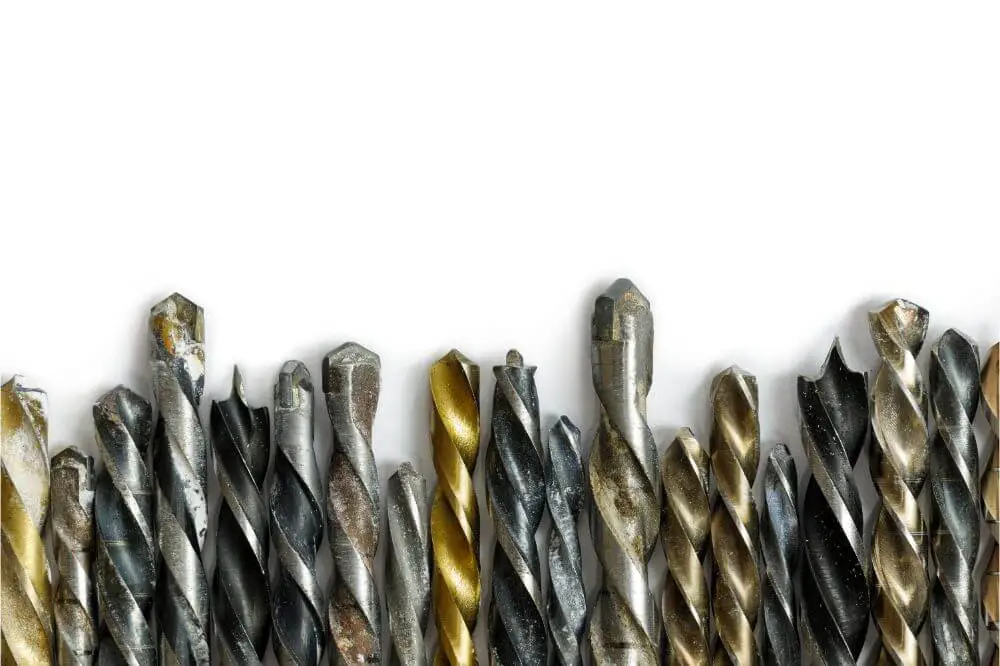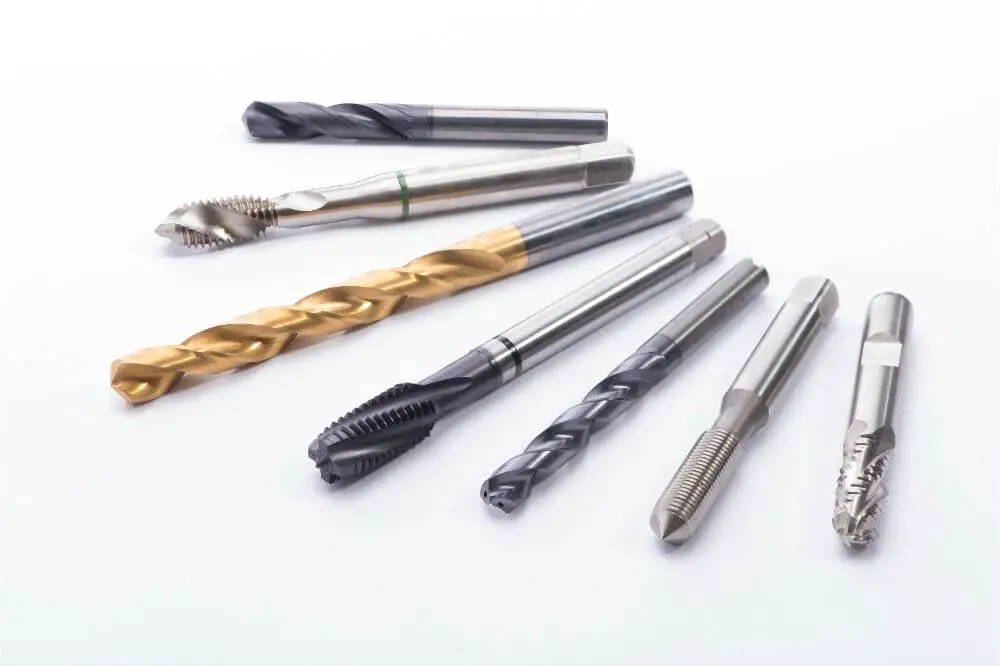You need the right tools if you plan to do construction or renovation work around the house. One of these essential tools is the power drill. Drills make holes in various materials, including wood, plastic, metal, masonry, etc.
That said, you need the right types of drill bits to make holes in various materials. Of course, many types are available, and the one you use will make a big difference. So today, we want to discuss drill bits.
Different Types of Drill Bits
There are quite a few different drill bits you may have used at home, so let’s take a closer look.
Twist Drill Bits
First, we have the twist drill bit, which looks somewhat like a corkscrew. These may also be called high-speed or HSS drill bits, the most commonly used drill bits. They make small holes in materials such as wood, plastic, metal, and walls.
The corkscrew or twist shape allows it to make a hole and remove the debris as it makes the hole. The twist drill bit is commonly made of high-speed or carbon steel.
The high-speed bit is ideal for drilling into various materials and can withstand a lot of heat. However, carbon steel drill bits are flexible and brittle, so they are unsuitable for drilling into metal.
Screwdriver Drill Bits
Screwdriver drill bits are also used for drilling holes and are similar to twist drill bits. They feature a hex shank and work well with most types of drills. They can be used with handheld drills and impact drivers too.
Depending on the screwdriver bit’s tip, it can drill into various materials. Remember that these bits are still designed for making holes, not inserting screws and fasteners.
Brad Point Drill Bits
Next is the brad point drill bit, sometimes called a spur point drill bit. This drill bit is also similar to the twist drill bit, with the difference being that the tip looks like the letter W.
This results in the hole’s circumference being drilled and removed first, unlike a regular drill bit that removes the center of the hole first. This type of drill bit is ideal because it doesn’t produce much resistance when drilling, although getting a hole started can be challenging.
These drill bits usually allow you to drill holes between 3 to 10 mm. Remember that this type works well with plastic and wood, although it is not ideal for metal and other hard and dense materials.
Rivet Drill Bits
We then have the rivet drill bit, designed to drill a small hole into metal, allowing you to make rivets that secure together two pieces of metal. This specialized drill bit is often used in construction work, so you probably won’t have much use for it at home.
The Bullet Point Drill Bit
The next type of drill list is the bullet point bit, which is not to be mistaken for the spur point bit. This drill bit is ideal for various materials, including metal, plastics, and wood. They are also suitable for jobs like removing stripped bolts—as long as the bolts are made of a softer metal than the bit itself.
Masonry Drill Bits
As the name implies, this type of drill makes holes in brick, concrete, stones, quarry tiles, etc. This drill bit generally features a tungsten carbide tip and a spiraled steel shaft, which makes it hard and heat resistant for this job. In addition, some models have a silicon bronze alloy tip that is very durable.
This drill bit is most commonly used with handheld power drills, and it’s all about ensuring enough power to make it through very hard surfaces. When drilling through such hard materials, you want the drill to work pretty slowly, which helps prevent the drill bit from overheating.

Plug Cutting Drill Bits
Another common drill bit is the plug cutting drill bit, which enables you to cut a small plug out of a surface, usually wood, which can be used to cover the fastener inserted into the hole.
This drill bit cuts a countersink hole for screws while simultaneously cutting out a plug that will fit in that hole. Then, you can use some glue to insert and fasten that plug into place. But, again, it’s about creating an aesthetically appealing finish so you can’t see the fastener.
Countersink Drill Bits
If you plan to use countersink screws, using a countersink drill bit allows you to create conical recesses. This type of drill bit works well on materials such as wood and plastic. However, it will not be able to drill through harder materials such as metals and masonry.
Spade Drill Bit
The spade drill bit is also known as a paddle drill or flatwood drill bit. You will see a pointed center combined with a wide and flat portion. These drill bits must be used with a power drill, specifically designed to cut into wood.
This type of drill bit is ideal for making fairly wide and large holes into wood due to the flat and wide nature of the paddle. Remember, the bottom of the hole is going to be flat. Some good news is that spade drill bits are very easy to sharpen.
Tile Drill Bits
Then, tile drill bits are designed to drill into ceramic and glass tiles. These drill bits usually always have a tungsten carbide tip, which is very hard, sharp, and precise.
It allows these bits to drill into tile and other such materials without damaging or cracking them. However, there are different types of bits designed for specific types of tiles, so be sure you have the right one. Generally, the two main types are diamond tile bits and spear point drill bits.
Moreover, when using a tile drill bit, you should keep the drill operating at a relatively low speed. These drill bits can also drill into glass if you use a lubricant.
Installer Drill Bit
The installer drill bit features the head of a twist drill bit but comes with a very long shank, sometimes up to 18 inches long. Due to the very long shank, this drill bit is ideal for drilling very deep holes or reaching into tight spaces where a standard drill bit cannot fit.
Some uses for these drill bits include the installation of wires through walls for things like a security camera and speaker systems. If you are doing electrical work around the house, this is a drill bit that you may need
Hole Saw Drill Bit
When people hear “hole saw,” they often picture a saw in itself. However, a hole saw is a hole saw drill bit, a specialized drill bit used with handheld power drills. If you need to make large holes in metal, plastic, wood, and masonry, this is what you need.
They can be used for repairs, building, and more. This drill bit will usually cut to 1.8 or 2 mm in depth and can create holes several inches in diameter. If you want the hole to be very smooth, you should have the drill running at a fairly slow speed.
Conclusion
As you can see, some drill bits are designed to make large holes and some for small holes, while some are designed for specific materials and others can handle a variety of materials. The bottom line is that the drill bit you use depends on the material being drilled into and the specific job.


